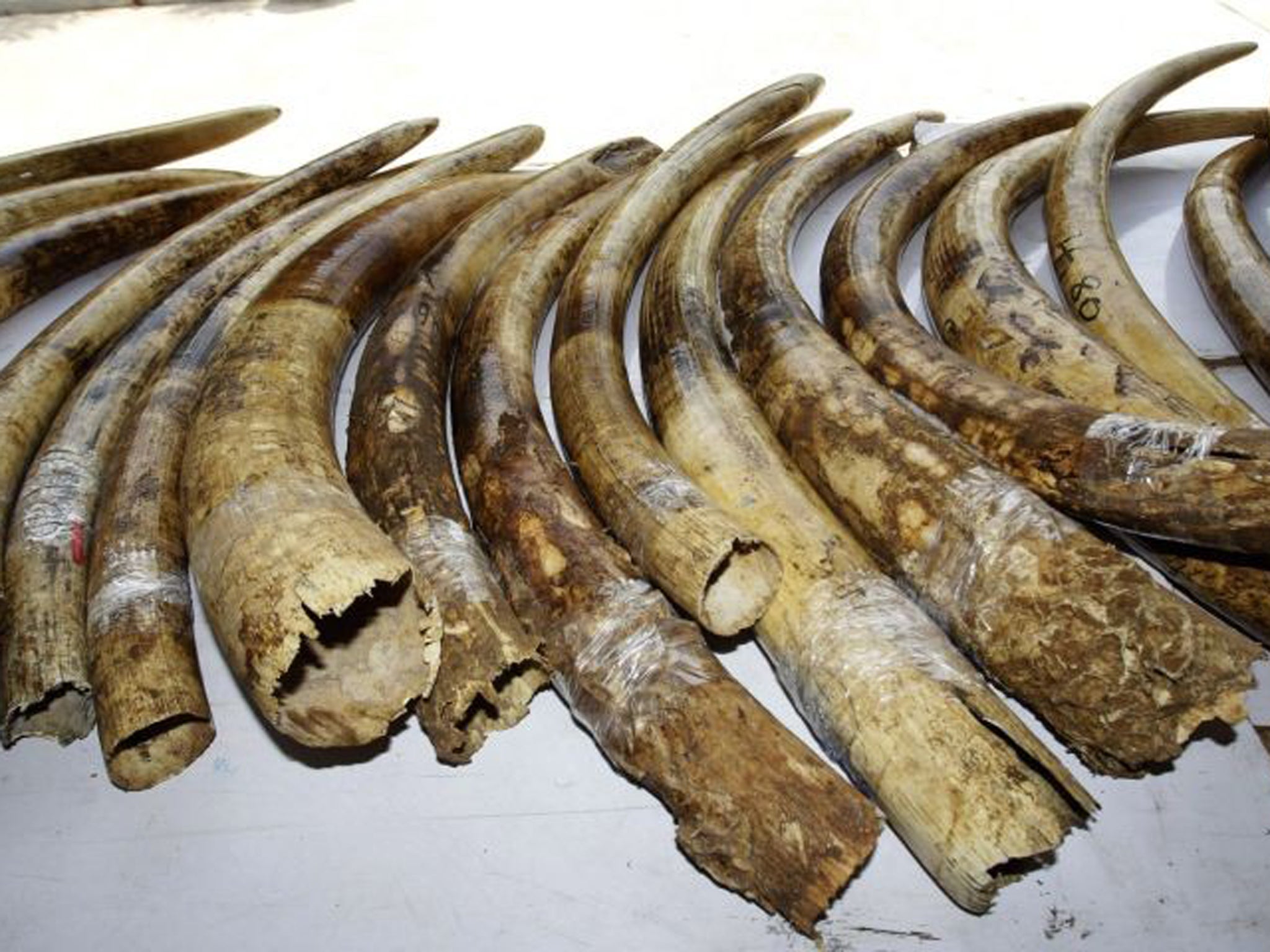US to destroy entire six-ton stockpile of ivory in message to poachers – but experts say it could just make problem worse
There are fears destruction just increases value of remaining stockpiles on illegal markets

Your support helps us to tell the story
From reproductive rights to climate change to Big Tech, The Independent is on the ground when the story is developing. Whether it's investigating the financials of Elon Musk's pro-Trump PAC or producing our latest documentary, 'The A Word', which shines a light on the American women fighting for reproductive rights, we know how important it is to parse out the facts from the messaging.
At such a critical moment in US history, we need reporters on the ground. Your donation allows us to keep sending journalists to speak to both sides of the story.
The Independent is trusted by Americans across the entire political spectrum. And unlike many other quality news outlets, we choose not to lock Americans out of our reporting and analysis with paywalls. We believe quality journalism should be available to everyone, paid for by those who can afford it.
Your support makes all the difference.This week the US is set to take a six-ton, multi-million dollar stockpile of seized ivory and crush it into dust, sending a message to poachers that it “will not tolerate ivory trafficking and the toll it is taking on elephant populations”.
It represents the entire collection of ivory items seized and stored by the US Fish and Wildlife Service (USFWS), with the exception of a few pieces to be kept for education purposes, and is thought to have come from at least 2,000 dead elephants.
The destruction process has been sanctioned by President Barack Obama, and will be carried out publicly in a bid to draw attention to the fact that, at a global market value of $10 billion (£6.2 billion) a year, illegal ivory trade now almost ranks as high as drugs and human trafficking industries.
It will be carried out on 14 November in front of senior officials, visiting dignitaries and TV cameras.
The USFWS said it was getting rid of the ivory “because elephant poaching in Africa is at its worst in decades and we are committed to protecting elephants from extinction”.
Officials added: “Destroying this ivory tells criminals who engage in poaching and trafficking that the United States will take all available measures to disrupt and prosecute those who prey on and profit from the deaths of these magnificent animals.”
Some experts remain unconvinced, however. Writing in the Denver Post, conservation economist with the Property and Environment Research Center Michael 't Sas-Rolfes said: “We know that destroying stockpiles reduces supply, but not necessarily demand.
“The ill-conceived USFWS gesture could create the perception that ivory is an increasingly scarce commodity on illegal markets, leading to higher prices and further poaching.
“It may simply place a higher price on the head of dead elephants while doing nothing to raise their value alive in the eyes of people who have to live with them and who bear the costs of protection.”
Anticipating this criticism, the USFWS insisted: “This ivory would never be made available to the market.
“Its destruction has no impact on the overall supply and does not create any incentive for poaching. By demonstrating our commitment to combat poaching and illegal trade, and to arrest and prosecute people who engage in these activities, we are providing a strong disincentive to poachers and wildlife traffickers.”
Join our commenting forum
Join thought-provoking conversations, follow other Independent readers and see their replies
Comments